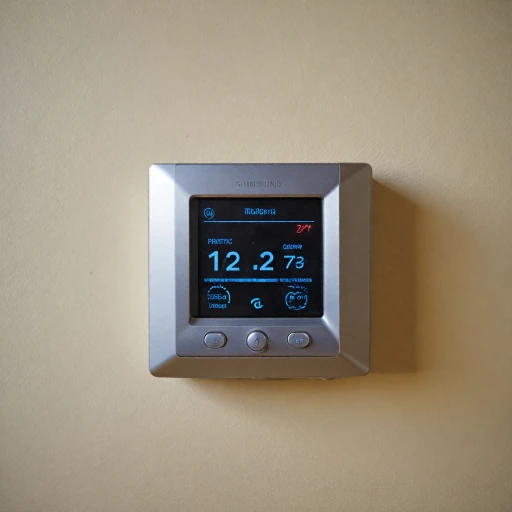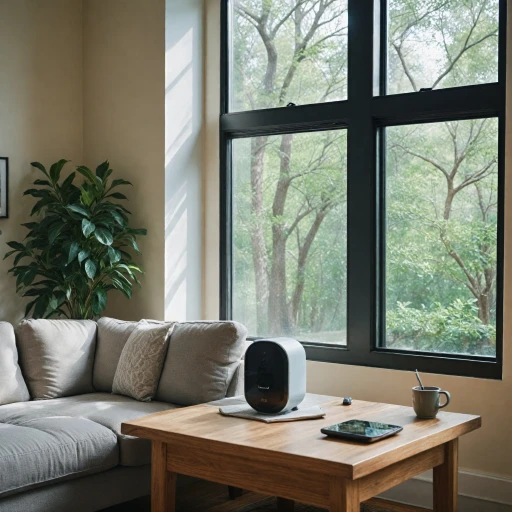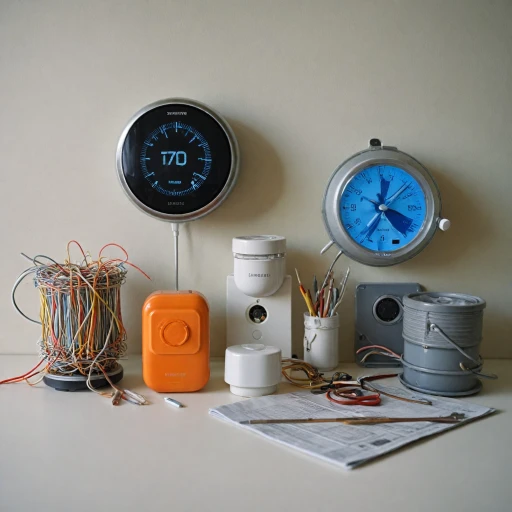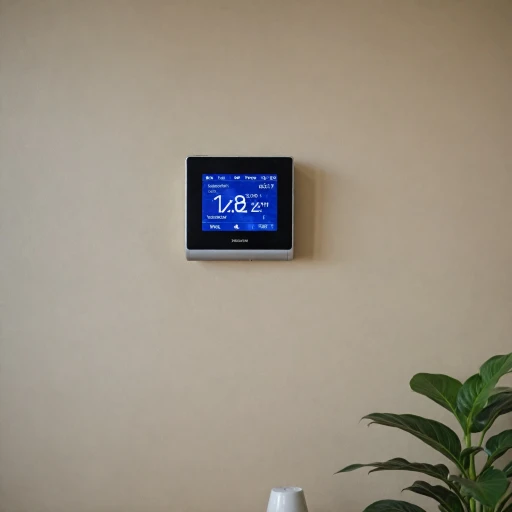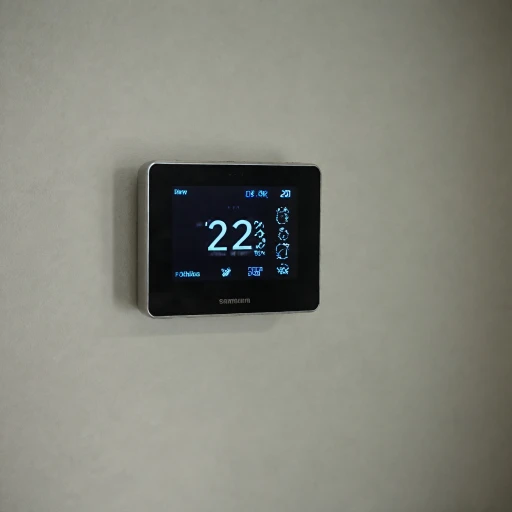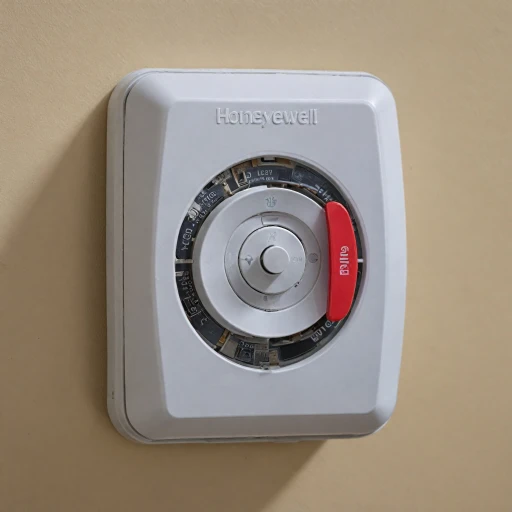
Understanding Smart Thermostats
Exploring the Basics of Smart Thermostats
Smart thermostats have revolutionized the way we manage indoor climates, offering a blend of convenience and efficiency. These devices are not just about adjusting temperatures; they integrate with various smart home systems to enhance overall security and comfort. By understanding the benefits of ecobee temperature sensors, homeowners can make informed decisions about their smart home setups.
At their core, smart thermostats are designed to learn your schedule and preferences, automatically adjusting the temperature to optimize energy use and comfort. They often come equipped with motion sensors that detect presence, ensuring that energy isn't wasted heating or cooling empty spaces. This feature not only contributes to energy savings but also enhances security by simulating occupancy when you're away.
Many smart thermostats offer remote control capabilities, allowing you to adjust settings from your smartphone or tablet. This is particularly useful for those who travel frequently or have unpredictable schedules. Additionally, the integration of wireless motion sensors and door sensors can further enhance the security of your home by triggering alarms or notifications if unexpected motion is detected.
When considering a smart thermostat, it's important to evaluate the regular price and features offered by different models. Some devices come with free shipping and professional monitoring options, which can be beneficial for those seeking a comprehensive smart security system. As you explore your options, consider how these devices can integrate with other smart home technologies, such as automatic doors and industrial doors, to create a seamless and secure environment.
The Role of Door Motion Sensors
Delving Into Motion Detection and Security Enhancements
When we talk about enhancing home security, motion sensors are indispensable allies, stepping up to guard every corner of your home. By strategically installing these sensors near doors and windows, you create a responsive security network that effectively detects any unexpected motion. These sensors play a pivotal role not only in smart security but also in providing peace of mind. The market offers a broad spectrum of motion sensors, including those suited for automatic doors, indoor and outdoor use, and even laser-based technologies for precision detection. Combining these with smart thermostats can further optimize your home’s energy and security solutions. Motion presence detection can trigger automatic systems, like lights or an alarm, ensuring safety and control over your home environment. Price varies across this spectrum, with many high-quality wireless motion sensors available with features such as remote control capabilities and professional monitoring options. While the regular price for some of these advanced systems might seem steep, savvy shoppers often find deals with free shipping on noteworthy models. For those interested in more industrial applications, both regular and automatic door sensors, as well as those for industrial doors, are available. Brands like bea have catered to this niche, delivering advanced technology for robust safety measures. Integrating these systems into a connected home system boosts not only convenience but also a higher degree of security. Understanding the various types and applications of motion sensors helps in making informed decisions about which products to incorporate into your smart home setup. For a deeper dive into how presence sensors can further enhance your smart thermostat's capabilities, check out how presence sensors enhance smart thermostats. This source provides a comprehensive look into how these technologies intertwine for a safer, smarter home.Integration of Smart Thermostats and Door Motion Sensors
Synergy Between Smart Thermostats and Motion-Sensing Technology
In the rapidly evolving landscape of smart home technology, there’s an increasing intersection of devices designed not only for convenience but also for enhancing security. A compelling example of this is the integration of smart thermostats with door motion sensors, creating a seamless system that communicates to enhance safety and efficiency. Smart thermostats are renowned for their ability to optimize energy use by learning the habits of occupants, such as when you’re home or away. By incorporating motion sensors into the mix, these systems gain the capacity to detect motion presence, offering a layer of automation that moves beyond simple schedules. When a door opens or a motion sensor detects movement, the thermostat can make temperature adjustments automatically, ensuring comfort when needed and conserving energy when it’s not. This integration also contributes significantly to smart security systems. For instance, in homes equipped with wireless motion detectors, any unexpected motion detection can trigger a sequence of actions, such as sending alerts to your smartphone or activating sensor alarms. This responsive system serves to both reassure homeowners of their safety and optimize energy management. This kind of integration can further extend to control systems for automatic door operations, enhancing the overall efficiency of industrial doors and creating a more intelligent environment for residential or commercial spaces. Moreover, this collaboration of technologies opens opportunities for remote control capabilities. Homeowners can monitor and adjust their environmental settings from virtually anywhere, offering unparalleled convenience and control over their indoor conditions. The combination of these smart technologies is particularly impactful in homes where professional monitoring services are deployed, as they provide an additional layer of oversight without significant increases in the regular price of these devices. For those interested in exploring further advancements in home automation, you can learn more about enhancing home automation with motion sensors, which delves deeper into how these technologies are transforming residential spaces into safer, more efficient environments.Benefits of a Connected Home System
Maximizing Benefits with a Connected Home System
Investing in a connected home system offers an array of benefits that enhance the safety and convenience of your living space. When seamlessly integrating smart thermostats with door motion sensors, homeowners can experience a superior level of control and automation.- Enhanced Security: With smart security features, door sensors and motion detection systems can notify you of unexpected movements. Moreover, industrial-grade wireless motion sensors can trigger sensor alarms or automatic door lock systems, improving safety and providing peace of mind.
- Energy Efficiency: Smart thermostats, integrated with motion presence sensors, can optimize your home’s heating and cooling patterns based on when rooms are actively used. This level of automation ensures that energy isn't wasted, ultimately lowering your utility expenses.
- Convenience and Comfort: Automatic doors and window sensors can adjust climate control settings without manual intervention. Remote control capabilities allow for adjustments from anywhere, offering flexibility and comfort at your fingertips.
- Safety Assurance: Automatic doors can be programmed to lock when the home is vacant, providing an extra layer of security. Systems can also integrate with regular price home monitoring services for comprehensive protection.
- Scalability: A connected home system offers interoperability with various devices, from laser based detectors to bea safety systems, ensuring you can expand or upgrade your setup according to future needs.
Choosing the Right Devices for Your Home
Factors to Consider When Selecting Devices
Choosing the right smart devices for your home is crucial in maximizing both efficiency and security. With the multitude of options available, understanding each feature can help you make a better decision:
- Compatibility: Ensure that the smart thermostat you choose is compatible with your existing smart home system. Check for integration capabilities with door motion sensors and other devices.
- Connectivity: Opt for wireless motion sensors and smart thermostats that offer easy connection to your home network. This ensures seamless operation and control, whether through a smartphone app or a central hub.
- Price vs. Features: Balance the cost with the features you require. Invest in a thermostat and motion sensors that provide essential functionalities like automatic adjustments, remote control, and alarm systems.
- Security Features: Evaluate the motion detector capabilities. Consider devices that offer extensive detection ranges, are laser-based or equipped with a sensor alarm for enhanced home security.
- Professional Monitoring: Some systems offer a range of security options, including professional monitoring services for an added layer of safety and peace of mind.
- Installation and Maintenance: For ease of use, choose devices that offer straightforward installation processes, such as plug-and-play setups or those with free shipping services provided by the manufacturer.
- Energy Efficiency: Select devices that help in reducing energy consumption, which can ultimately lower your utility bills.
With these considerations in mind, you'll be well on your way to establishing a smart, secure, and efficient home system that integrates seamlessly into your daily life.

